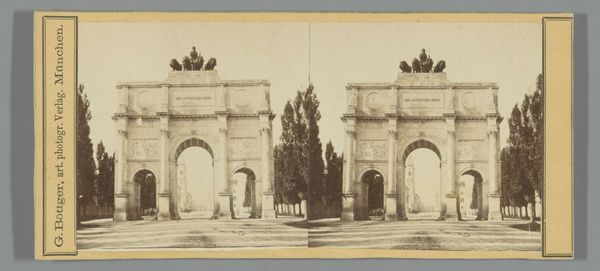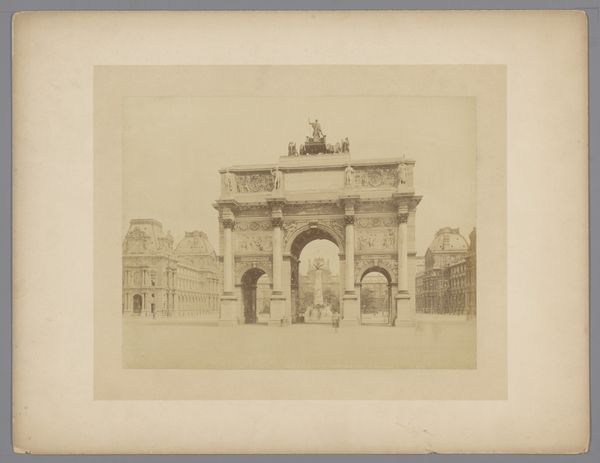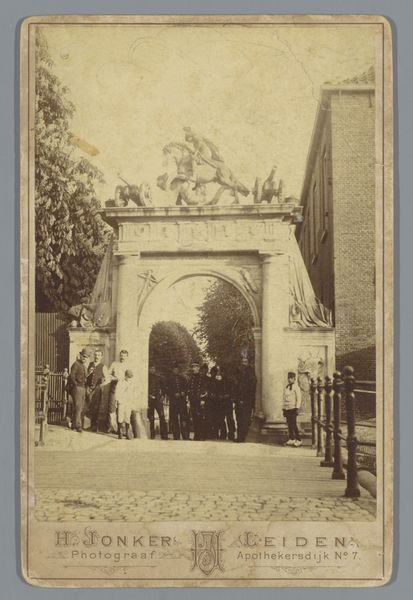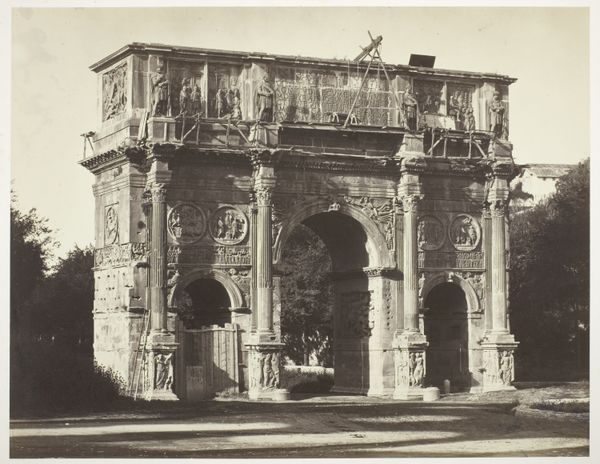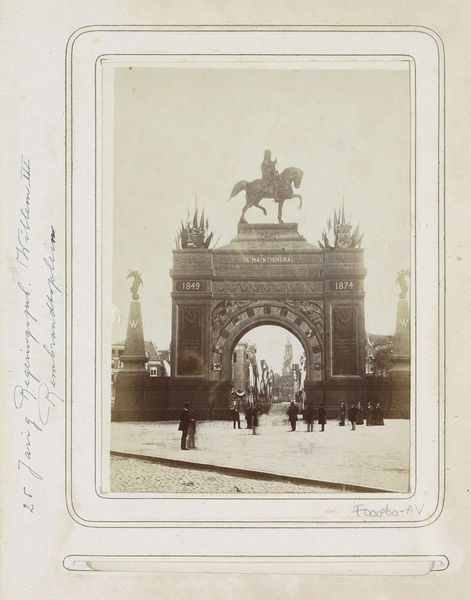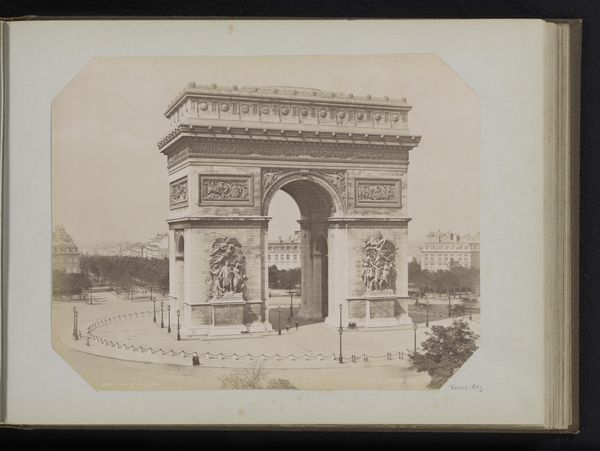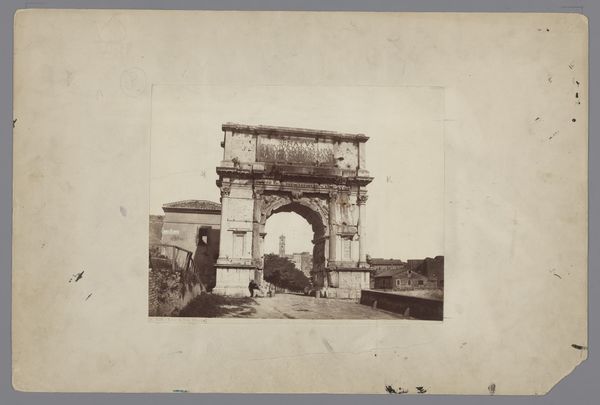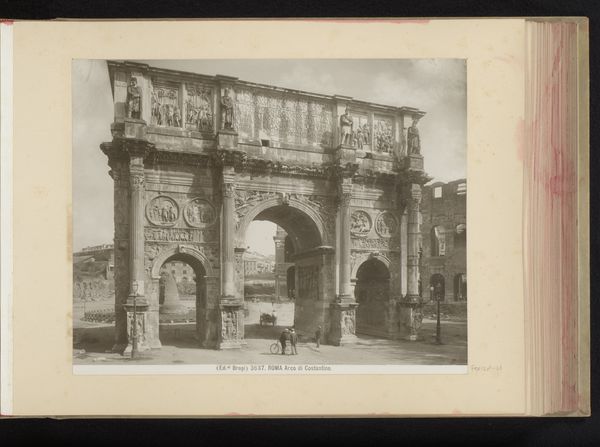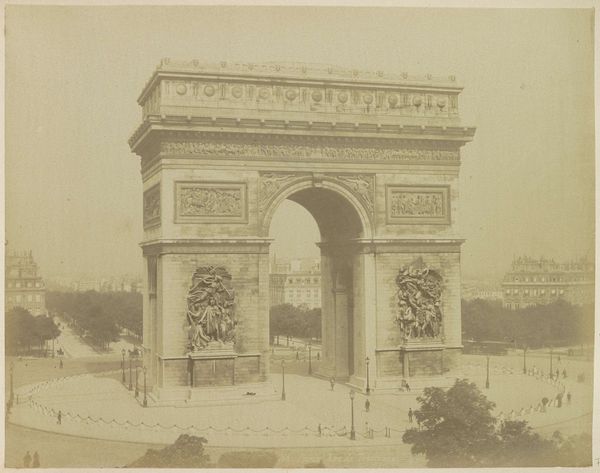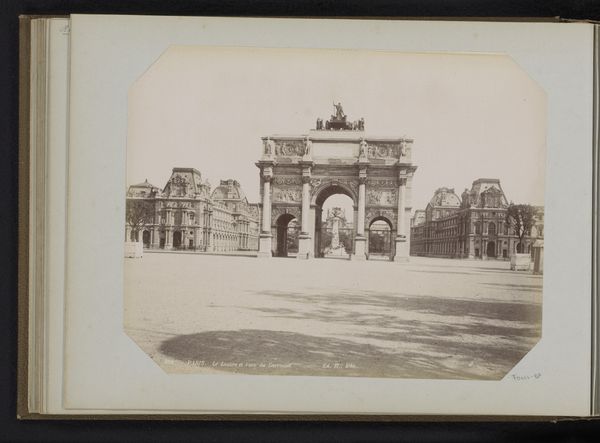
De Arc de Triomphe du Carrousel in Parijs, gezien richting Jardin des Tuileries c. 1880 - 1900
0:00
0:00
Dimensions: height 269 mm, width 206 mm
Copyright: Rijks Museum: Open Domain
Curator: We're looking at a gelatin silver print by Louis Antoine Pamard, titled "De Arc de Triomphe du Carrousel in Parijs, gezien richting Jardin des Tuileries," created sometime between 1880 and 1900. Editor: It's quite imposing, isn’t it? The symmetry is so absolute. The tonal range is narrow, lending it a certain faded grandeur. Curator: The Arc de Triomphe du Carrousel itself is deeply symbolic. Commissioned by Napoleon I in 1806, it was intended to commemorate his military victories, emulating Roman triumphal arches, connecting himself to that lineage of power. This print offers a view toward the Tuileries Garden. Editor: Notice how Pamard has positioned the camera? Dead center. This enforces the rigid geometry, the three-part division, the echoes of classical architecture, even within the receding spaces framed by the arches themselves. Curator: And that architectural language, Neoclassical, was explicitly employed to legitimize and solidify Napoleon’s power. It presented an image of order, stability, and a return to the perceived glories of antiquity. Editor: But the muted tones... there's almost a melancholic feel about it. The light lacks contrast, it flattens the forms somewhat, creating this effect as if this historical triumph it silently observed by ghosts. Curator: Perhaps that reflects the evolving political landscape of France towards the end of the 19th century. The Second Empire was long gone, replaced by the Third Republic. What once was a symbol of imperial might had become… something else. Editor: Yes, transformed into this static, almost monumental study in pure form by the photographer’s vision, wouldn't you say? That feeling of receding space, of strict classical form... It captures a frozen moment in time. Curator: A really thought provoking point. Pamard's capture invites us to ponder how historical symbols shift in meaning and perception across time. Editor: And to see it presented with such stark formal language reminds us that even in photographs, artistic intention plays its crucial role in communicating it.
Comments
No comments
Be the first to comment and join the conversation on the ultimate creative platform.
